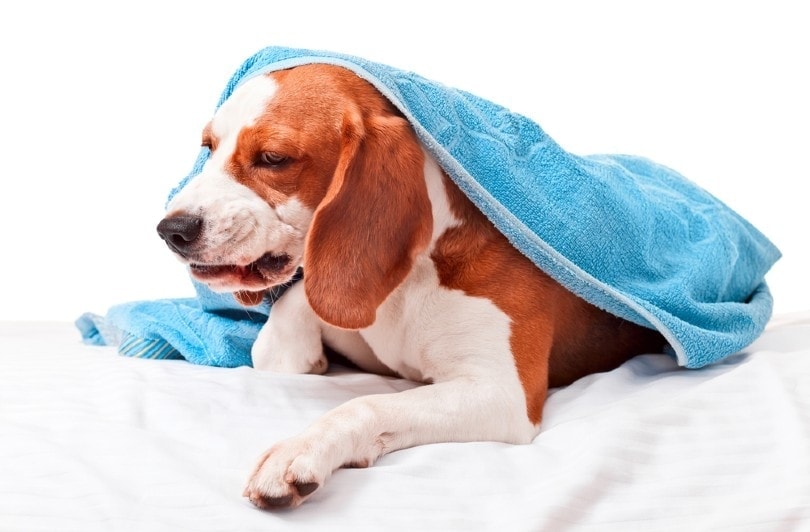Seborrhea in Dogs: Causes, Signs & Treatment (Vet Answer)

Updated on
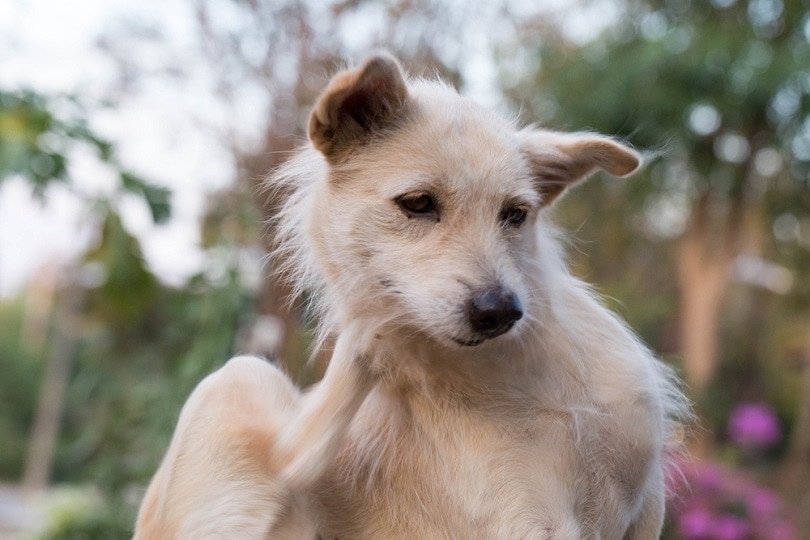
Your dog has itchy, flaky skin and smells so bad you have to wash their blankets daily. At your vet appointment to get a handle on this scaly skin condition, your dog’s doctor mentions that they have seborrhea. What’s the low-down on this skin condition, and what can you do to help your furry family member out?
What Is Seborrhea in Dogs?
Seborrhea is a skin condition in dogs that is often itchy or pruritic. Also known as seborrheic dermatitis, affected dogs have abnormal keratinization of the outer layer of the skin. This affects the normal cycle of skin cells being made and shed. Hair follicles and sebaceous glands are also affected.
Dogs are typically most affected around skin folds, and you’ll also commonly see signs on the bottom of their neck or around their paws.
Other locations include:
- Axillary or armpit regions
- Under the tail or perineum
- On the belly, especially if your dog has a large skin fold between their mammary glands
Seborrhea is classified into two main categories:
- Oily seborrhea or seborrhea oleosa
- Dry seborrhea or seborrhea sicca
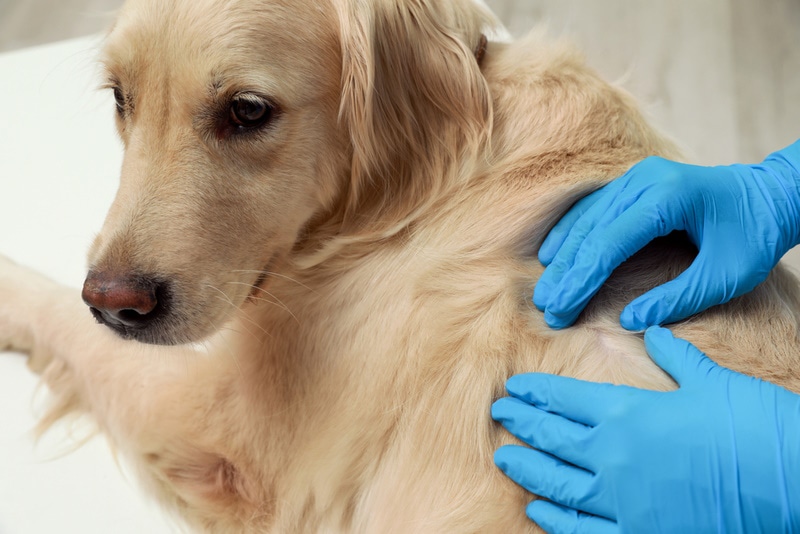
There’s also primary and secondary seborrhea. Primary seborrhea is a genetic condition that predominantly affects certain dog breeds. Secondary seborrhea is just that: it occurs secondary to other conditions.
Skin infections are common in dogs with seborrhoea, even if it wasn’t the initial cause of the problem. Seborrhoea damages the skin’s protective layer allowing bacteria and yeasts to overgrow.
What Are the Signs of Seborrhea in Dogs?
A hallmark of seborrhea is flaky, scaling skin. Many dogs will have an oily coat and skin or a dry, dull coat. Some dogs will have a combination of seborrhea sicca and seborrhea oleosa.
Because the sebaceous glands in affected dogs tend to produce excessive sebum, your dog could be prone to ear infections or have more discharge in their ears.
- Itchiness, sometimes to a severe degree
- Crusty skin lesions
- Pustules, particularly if accompanied by a bacterial infection
- Foul odor
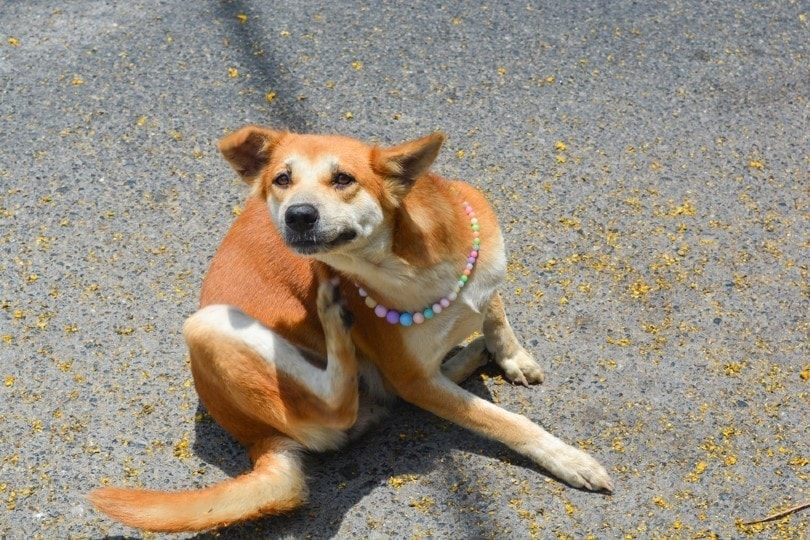
What Are the Causes of Seborrhea in Dogs?
Primary Seborrhea
Primary seborrhea has a genetic link. Certain breeds appear to be predisposed to developing it, including:
- American Cocker Spaniels
- West Highland White Terriers
- Basset Hounds
If your dog has primary seborrhea, they’ll usually develop it at a relatively young age. As they age, it will worsen, so treatment is indicated.
Secondary Seborrhea
Your dog may develop secondary seborrhea if one or more conditions affect the coat and skin. These conditions can occur at a young age or develop as your pet gets older.
Metabolic conditions often cause secondary seborrhea. They can alter how keratin is produced if they affect the skin layer. Some of the more common metabolic health issues that can affect your dog’s skin are:
- Diabetes
- Hypothyroidism
- Cushing’s disease
Skin allergies are very prevalent in dogs. They lead to skin infections, ear infections, and itchiness (among other things). Unfortunately, if your dog has allergies, they’re at a higher risk of developing secondary seborrhea.
If your dog is eating a well-balanced diet, it’s less likely that they will develop a nutritional deficiency, but it’s still something to be aware of because some breeds may have deficiencies that have a genetic link. For example, zinc-responsive dermatosis is more common in Huskies.
- Mites
- Pemphigus foliaceus
- Cutaneous lymphoma

Diagnosing Seborrhea in Dogs
When you bring your dog in for an evaluation, your veterinarian will perform a physical exam and ask questions about how long your dog’s skin has been flaring up and what you’ve tried treating it with. Be honest here because it can help your vet determine what has been effective and possibly rule out certain conditions. For instance, if you’ve been using a prescription oral flea and tick preventative like Simparica, it’s less likely that your dog will have mites.
Veterinarians use several standard tests to evaluate a dog with skin issues. They’ll often perform blood work to look for metabolic changes, including a biochemistry panel and thyroid testing. More in-depth blood work includes dexamethasone suppression testing to look for Cushing’s disease.
Your veterinarian will use skin impressions (skin cytology) to look for bacteria and fungal organisms that can cause skin infections. They might scrape a layer of your dog’s skin to look for mites or lice.
Sometimes, your vet will need to take skin biopsies to look for issues like skin cancer or autoimmune diseases.
How Do I Care for a Dog With Seborrhea?
Your veterinarian will need to treat underlying health issues contributing to seborrhea. They may need to prescribe medications to reduce skin inflammation and itching particularly in dogs that have underlying allergies. Commonly used medications include the following:
- Prednisone
- Oclacitinib (Apoquel)
- Cyclosporine (Atopica)
You’ll likely need to use topical therapy to treat your dog. Certain shampoos can help remove skin flakes, improve the skin barrier, and help alleviate itching. A common ingredient in these shampoos is salicylic acid. Your veterinarian may also recommend conditioning sprays or mousse.
Because seborrhea often affects the ears, you may need to clean your pup’s ears. Let your veterinarian know if you notice signs of an ear infection, such as your dog shaking their head, redness, or a yeasty odor.
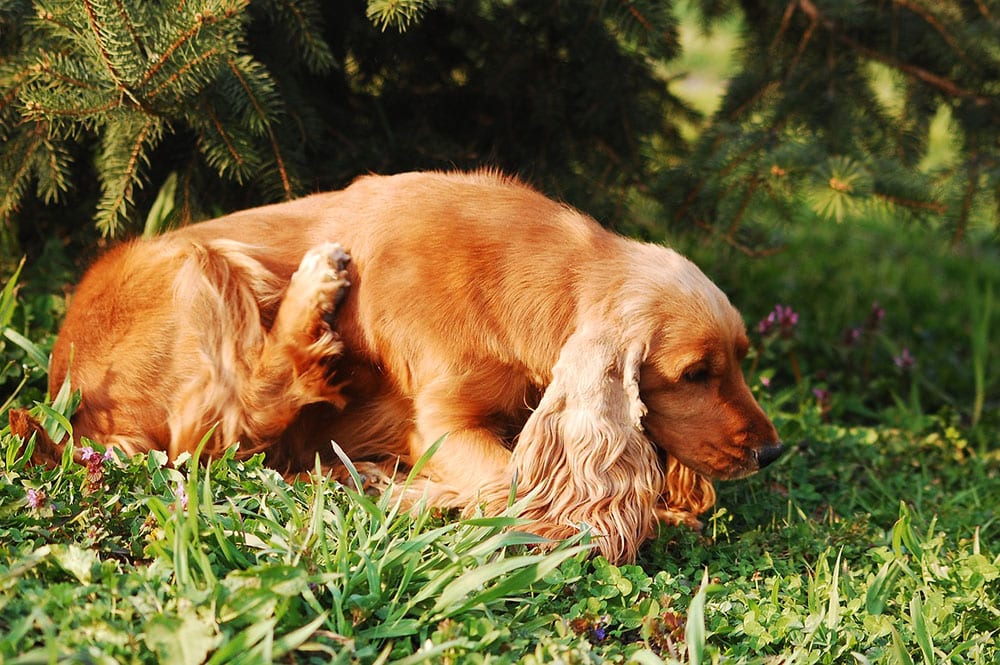
If your veterinarian determines your dog has a skin infection, they will generally recommend oral or topical treatment for these microorganisms. They might prescribe antibiotics or antifungal medications for several weeks.
The right balance of omega-3 and omega-6 fatty acids are important for normal skin cell function. These may be given as additional supplements to a dog’s diet.
Seborrhea generally needs lifelong management. You’ll usually need to use shampoos and ear cleaners regularly. You should also monitor your dog’s skin regularly and communicate with your veterinarian about changes you notice or if your dog appears itchy.
Frequently Asked Questions (FAQ)
Is seborrhea contagious?
Seborrhea is not contagious to other dogs, animals, or humans. Some skin parasites that can cause secondary seborrhea can be contagious, including fleas, lice, and certain mites.
Can seborrhea cause my dog to lose hair?
Yes, seborrhea can cause dogs to lose hair. Many conditions cause alopecia or hair loss, and your dog might lose hair directly or indirectly from seborrhea. It can be challenging to determine if hair loss is from the seborrhea itself or related to the primary cause of the seborrhea.
Conclusion
Seborrhea is a complex condition that can be caused by genetics or develop secondary to other metabolic or skin issues. Your veterinarian will develop a treatment plan that aims to reduce your dog’s clinical signs and help restore the health of your dog’s skin.
Featured Image Credit: rachanon-cumnonchai, Shutterstock








